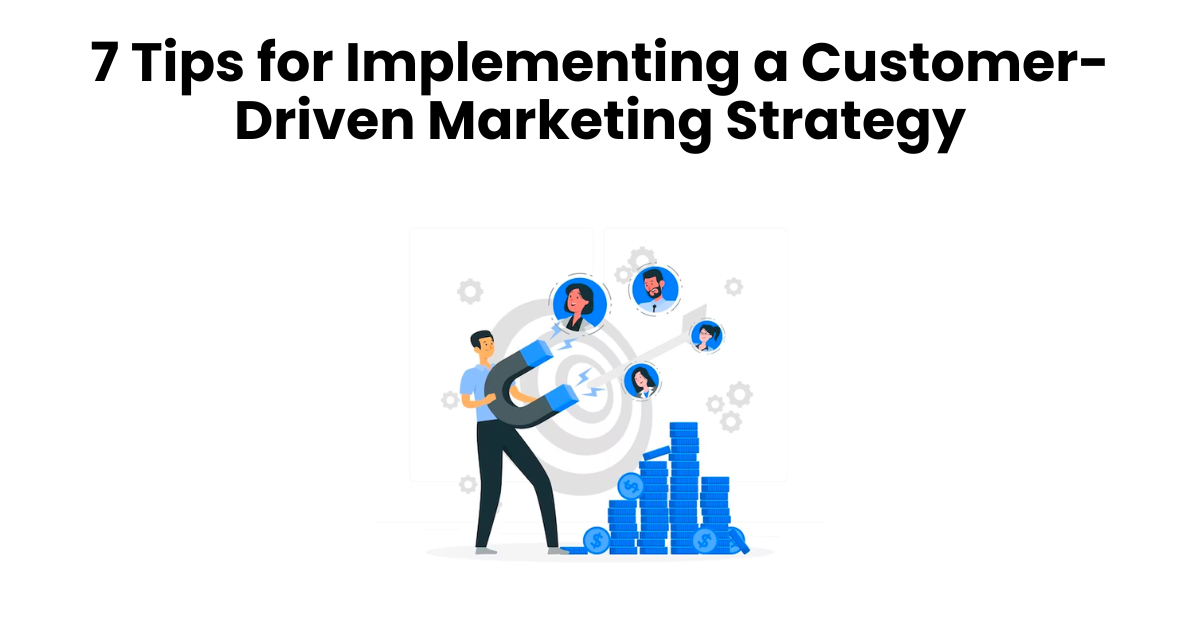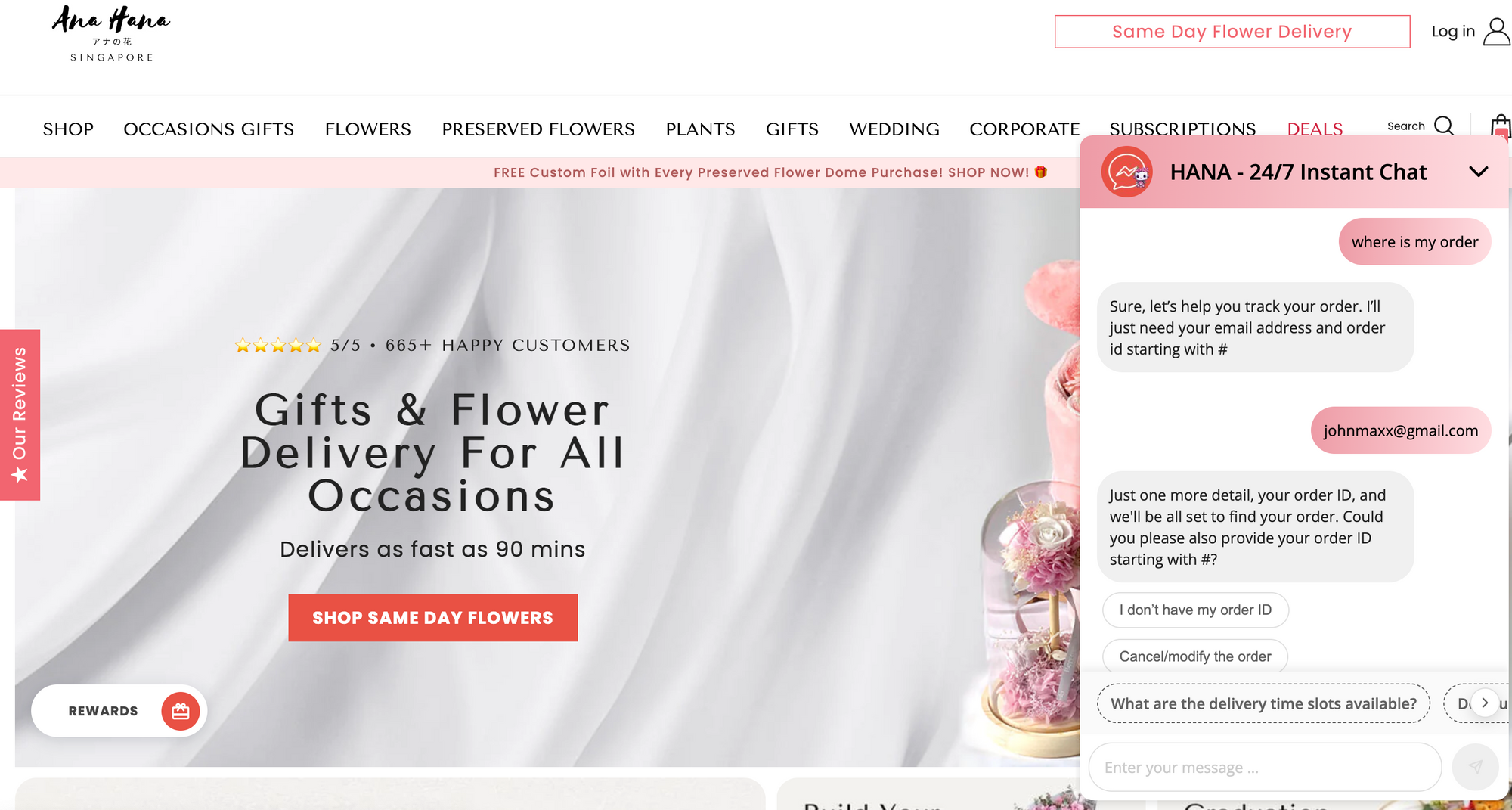7 Tips for Implementing a Customer Driven Marketing Strategy

In today's customer-centric world, businesses need to focus on their customers more than ever before. This is where customer-driven marketing comes in. Customer-driven marketing is a marketing strategy that focuses on putting the customer first. It's about understanding your customers' needs and wants, and then creating marketing campaigns that are relevant and engaging to them.
There are many benefits to implementing a customer driven marketing strategy. For one, it can help you increase sales and conversions. When you create marketing campaigns that are relevant to your customers, they are more likely to engage with your brand and make a purchase.
Read the full blog to learn more about each of these tips and how to implement them in your business.
What is customer driven marketing?
Customer-driven marketing is a marketing strategy that focuses on putting the customer first. It's about understanding your customers' needs and wants, and then creating marketing campaigns that are relevant and engaging to them.
Traditional marketing often starts with the product or service and then tries to find customers who are interested in it. Customer-driven marketing, on the other hand, starts with the customer and then works backward to develop products and services that meet their needs.
Importance of customer-driven marketing strategy
Customer value driven marketing strategy is important for a number of reasons. Here are a few of the most important:
- Increased sales and conversions: When you create marketing campaigns that are relevant and engaging to your customers, they are more likely to make a purchase.
- Improved customer satisfaction and loyalty: When customers feel like they are being heard and valued, they are more likely to be repeat customers and promote your brand to their friends and family.
- Reduced marketing costs: When you focus on creating targeted marketing campaigns that are relevant to your customers, you're less likely to waste money on marketing campaigns that don't perform well.
- Deeper understanding of customers: Customer-driven marketing forces you to constantly listen to your customers and learn from their feedback. This can lead to a deeper understanding of your customers' needs, wants, and pain points.
- Better products and services: By understanding your customers' needs and wants, you can develop products and services that are more likely to be successful.
Benefits of a customer driven marketing strategy
A customer driven marketing strategy, also known as customer based marketing strategy, focuses on meeting the needs and preferences of the customer rather than solely emphasizing the product or service. This approach offers several benefits:
- Enhanced Customer Satisfaction: By understanding and addressing customer needs, you can deliver products and services that align with their preferences, resulting in higher satisfaction levels.
- Improved Customer Loyalty: When customers feel that a brand truly values them and caters to their specific requirements, they are more likely to remain loyal and make repeat purchases.
- Increased Customer Lifetime Value: Satisfied and loyal customers tend to spend more over their lifetime with your brand, providing a steady stream of revenue.
- Better Targeting: Customer-driven marketing allows for more precise segmentation and targeting, ensuring that your marketing efforts are directed at the right audience, which can lead to improved conversion rates.
- Higher ROI: By focusing marketing efforts on what customers want, you can reduce wasteful spending on irrelevant campaigns and invest resources where they are more likely to generate a return on investment.
- Innovative Product Development: Customer feedback and insights are crucial for product development. A value driven approach can lead to innovative products and services that are more likely to succeed in the market.
- Effective Problem Resolution: When customers are at the center of your strategy, addressing their issues and concerns becomes a priority. Quick and effective problem resolution can prevent negative reviews and customer churn.
- Word-of-Mouth Marketing: Satisfied customers are more likely to recommend your brand to others, acting as brand ambassadors and contributing to organic growth through word-of-mouth marketing.
- Competitive Advantage: A customer-driven approach can set you apart from competitors who may not be as attentive to customer needs, giving you a distinct advantage in the market.
- Data-Driven Decision Making: A customer-centric strategy relies on data and insights from customer interactions. This data-driven approach enables more informed decision-making and a deeper understanding of market trends.
7 Tips for Implementing a Customer Driven Marketing Strategy
Here are seven tips for implementing a customer value-driven marketing strategy:
1. Know your customers
This may seem like a no-brainer, but it's important to have a deep understanding of your customers before you can start creating marketing campaigns that are relevant to them. This includes understanding their demographics, psychographics, needs, wants, and pain points.
You can learn more about your customers through surveys, interviews, customer data analysis, and social media listening.
2. Create customer personas
Once you have a good understanding of your customers, you can create customer personas. Customer personas are fictional representations of your ideal customers. They should be based on real data and research, and they should include information such as demographics, psychographics, behavioral patterns, and goals.
Customer personas can help you to better understand your different customer segments and to create more targeted marketing campaigns.
3. Segment your customers
Once you have created customer personas, you can segment your customers into different groups. This will allow you to create more targeted marketing campaigns.
You can segment your customers based on demographics, psychographics, behavioral patterns, or any other criteria that are relevant to your business.
4. Personalize your marketing campaigns
Customers are more likely to engage with marketing campaigns that are relevant to them. This is why it is important to personalize your marketing campaigns based on your customer segments.
You can personalize your marketing campaigns by using customer data, such as purchase history and website activity. You can also personalize your marketing campaigns by using dynamic content, such as product recommendations and personalized offers.
5. Focus on customer value
Customer value is the perceived value that a customer receives from a product or service. When you focus on customer value, you create marketing campaigns that are more likely to resonate with customers.
You can focus on customer value by highlighting the benefits of your products or services and by offering discounts and promotions. You can also focus on customer value by providing excellent customer service and by building relationships with customers.
6. Build relationships with customers
Customer based marketing is all about building relationships with customers. You can build relationships with customers by providing excellent customer service, by offering loyalty programs, and by engaging with customers on social media.
When customers feel like they have a relationship with your brand, they are more likely to be repeat customers and to promote your brand to their friends and family.
7. Measure and improve your results
It is important to track the results of your marketing campaigns so that you can see what is working and what is not. You can use metrics such as website traffic, conversion rates, and customer satisfaction to measure the success of your marketing campaigns.
Once you have tracked the results of your marketing campaigns, you can make adjustments to improve your results in the future.
Bonus Tip: AI-powered customer driven marketing strategy

Manifest AI can play a crucial role in enhancing your consumer driven marketing strategy by harnessing the power of artificial intelligence. Here's how you can leverage Manifest AI for this purpose:
Data Analysis and Insights
Manifest AI can analyze vast amounts of customer data to uncover valuable insights about customer behavior, preferences, and trends. It can identify patterns and correlations that humans might miss, helping you make data-driven marketing decisions.
Personalization
Utilize Manifest AI to create highly personalized marketing campaigns. The AI can segment your customer base and tailor content, offers, and product recommendations to each segment, enhancing the relevance of your marketing efforts.
Predictive Analytics
Manifest AI can predict future customer behavior based on historical data. This enables you to anticipate customer needs and proactively offer relevant products or services, improving customer satisfaction.
Chatbots and Virtual Assistants
Implement AI-driven chatbots and virtual assistants powered by Manifest AI on your website or messaging platforms. These bots can provide instant responses to customer inquiries, handle routine tasks, and even offer product recommendations.
Multilingual Support
Manifest AI can provide multilingual customer support, breaking down language barriers and expanding your reach to a global audience. This ensures that all customers receive a personalized experience.
Conclusion
In conclusion, implementing a customer driven marketing strategy is essential for any business that wants to succeed in today's competitive marketplace. By focusing on the needs and wants of their customers, businesses can create marketing campaigns that are more relevant and engaging, leading to increased sales, improved customer satisfaction, and reduced costs.
The seven tips outlined in this blog post provide a roadmap for businesses of all sizes to implement a customer driven marketing strategy. By following these tips, businesses can better understand their customers, personalize their marketing campaigns, and build relationships with their customers.
FAQs
Here are the most frequently asked questions related to custom driven marketing:
How do you develop a customer driven strategy?
To develop a customer-driven strategy, start by thoroughly understanding your customers' needs, preferences, and pain points through research and feedback. Then, use this information to tailor your products, services, and marketing efforts to meet those specific customer needs. Continuously gather and analyze data to stay aligned with evolving customer expectations and market trends.

.png)
